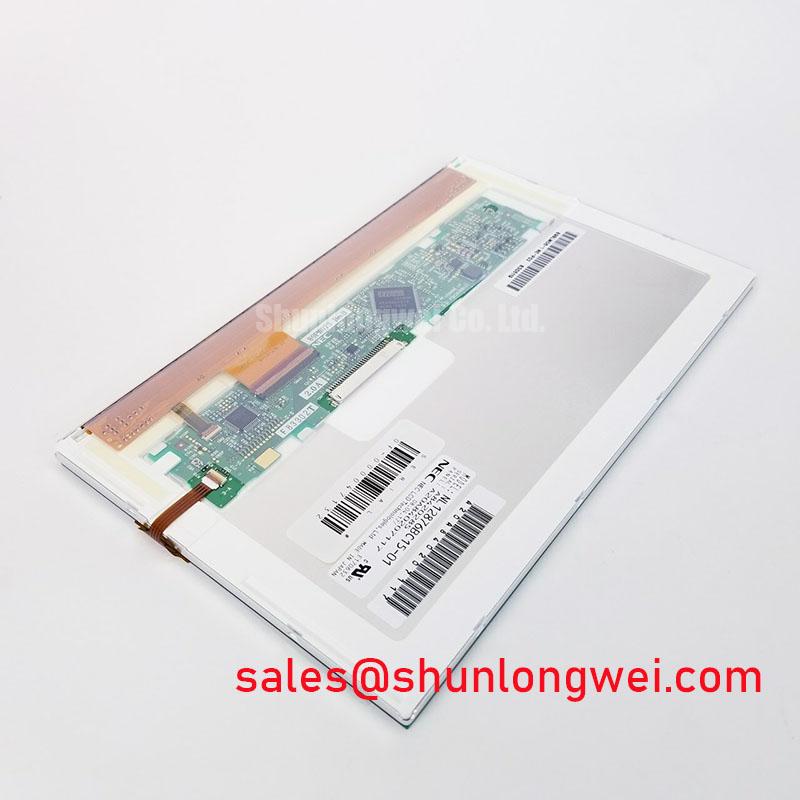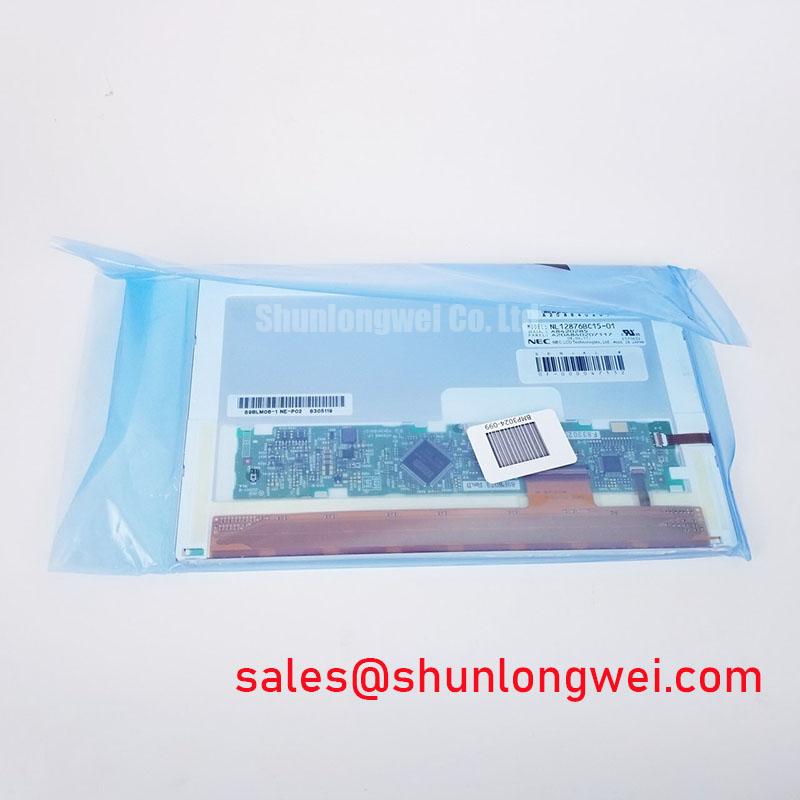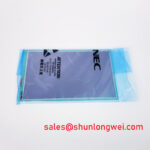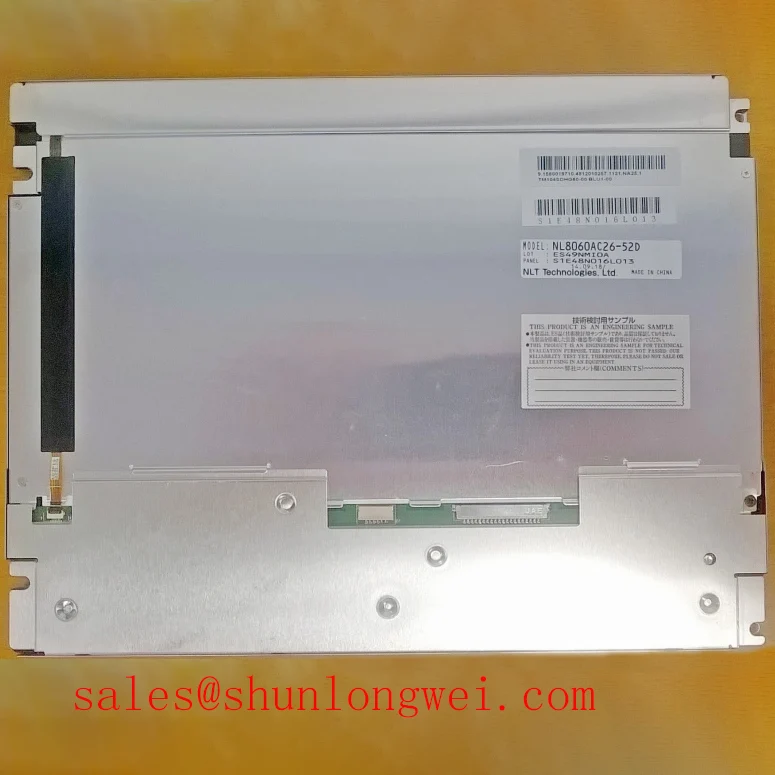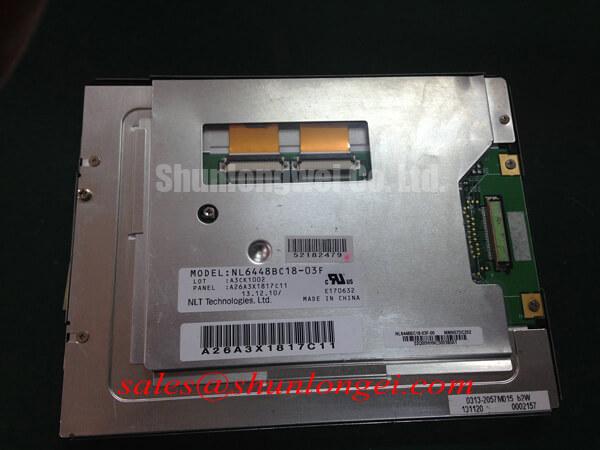Content last revised on November 14, 2025
NL12876BC15-01: WXGA LCD for Industrial Environments
Delivering Visual Integrity in Demanding Operational Theaters
This 9.0-inch amorphous silicon TFT-LCD module is engineered to provide exceptional visual performance and steadfast reliability in challenging industrial and commercial applications. With key specifications of 1280x768 WXGA | 800:1 Contrast | -20°C to +70°C Operating Temp, it delivers on two critical engineering needs: sustained operational uptime and high-fidelity data readability. The NL12876BC15-01 directly addresses the requirement for clear human-machine interface (HMI) visualization in environments where ambient light and temperature extremes can compromise standard displays. Its combination of an anti-glare surface and high contrast ensures data remains legible, reducing potential for operator error.
A Deeper Analysis of the NL12876BC15-01's Resilient Architecture
The inherent design characteristics of the NL12876BC15-01 are focused on providing a durable and visually consistent platform for system integrators. Each element contributes to its suitability for environments beyond standard office or consumer settings.
Wide Thermal Operating Envelope
What is the key benefit of the NL12876BC15-01's wide temperature range? It allows reliable operation from -20°C to +70°C without auxiliary climate control. This specification is crucial for equipment deployed in outdoor kiosks, unheated warehouses, or control panels on factory floors subject to significant temperature swings. It simplifies enclosure design by reducing or eliminating the need for dedicated heating or cooling components, thereby lowering total cost of ownership and potential points of failure.
Optimized Optical Performance
The module's optical stack is designed for clarity. The anti-glare surface treatment effectively diffuses reflections from overhead lighting or indirect sunlight, preventing specular highlights that can obscure critical information. This is complemented by an 800:1 contrast ratio. Think of contrast ratio as the visual equivalent of a signal-to-noise ratio; a higher ratio ensures that the vital information (the signal) is distinctly legible against the screen's background state (the noise), even when ambient light is high. For systems requiring alternative resolutions, the G104S1-L01 presents a different set of specifications for evaluation.
Signal Integrity via LVDS Interface
The use of a Low-Voltage Differential Signaling (LVDS Interface) is a deliberate engineering choice for industrial applications. This interface is inherently more resistant to electromagnetic interference (EMI) than single-ended interfaces, ensuring reliable data transmission from the display controller to the panel, which is a common challenge in environments with high-power motors, drives, and inverters.
Data-Informed Selection: Comparative Parameter Analysis
To empower your component selection process, this section provides factual data points for evaluating the NL12876BC15-01 against general display categories. This information is intended to support an objective, data-driven decision based on your specific application requirements.
- Resolution vs. Size: The 1280 x 768 WXGA resolution in a 9.0-inch diagonal format provides a pixel density suitable for displaying detailed graphical interfaces, diagnostic screens, and process monitoring data without excessive scaling.
- Environmental Tolerance: Its -20°C to +70°C operating range and -30°C to +80°C storage range distinguish it from commercial-grade displays, which typically operate within a much narrower 0°C to 50°C window. This resilience is a key factor for non-climate-controlled deployments.
- Power Consumption: The panel and backlight system have a combined typical power consumption of 4.15W. This figure is an important input for the system's overall power budget and thermal management strategy, particularly in sealed or compact enclosures. For applications demanding a different form factor, the NL6448BC33-71D provides another point of reference.
Deployment Scenarios: Where Environmental Resilience Matters
The robust construction of the NL12876BC15-01 makes it an excellent candidate for a range of specialized equipment. Its value is most apparent where operational continuity cannot be compromised by environmental factors. For industrial HMIs requiring WXGA resolution with dependable operation between -20°C and +70°C, this display is the technically sound choice. How does the anti-glare surface enhance usability? It diffuses ambient light, reducing reflections and improving operator focus on data. The display's resilience makes it a strong contender for systems such as:
- Industrial Automation: Control panels for manufacturing lines, process controllers, and robotics interfaces.
- Test and Measurement Equipment: Portable or benchtop devices used in field service or on production floors.
- Transportation Systems: In-cabin displays for construction and agricultural vehicles, or information kiosks in train stations and airports.
- Medical Instrumentation: Non-diagnostic monitoring devices that require clear, reliable readouts in varied clinical settings.
Understanding the nuances of different display technologies can further inform your design. Explore our guide on TFT-LCDs for industrial applications for broader context.
Engineering Specifications: NL12876BC15-01 Data Points
The following parameters are derived from the official datasheet to support your design and integration process. For complete details, please refer to the official documentation.
| Feature | Specification |
|---|---|
| Panel Characteristics | |
| Display Technology | a-Si TFT-LCD, Normally White, Transmissive |
| Screen Size | 9.0 inches (229.4 mm) |
| Resolution | 1280(RGB)×768, WXGA |
| Active Area | 195.072(W) × 116.928(H) mm |
| Outline Dimensions | 210.0(W) × 133.0(H) × 7.3(D) mm |
| Optical Performance | |
| Luminance | 300 cd/m² (Typ.) |
| Contrast Ratio | 800:1 (Typ.) (Transmissive) |
| Viewing Angle | 80/80/80/80 (Typ.)(CR≥10) |
| Surface Treatment | Anti-Glare |
| Electrical & Environmental | |
| Interface Type | LVDS (1 ch, 8-bit), 20 pins Connector |
| Power Supply | 3.3V (Typ.) |
| Operating Temperature | -20 ~ 70 °C |
| Storage Temperature | -30 ~ 80 °C |
| Backlight | WLED |
Strategic Integration: The Advantage of a Durable HMI
As industrial systems become more interconnected under frameworks like Industry 4.0, the reliability of every component, including the HMI, becomes paramount. A display failure can lead to costly downtime, compromise safety, or result in production errors. Integrating a display like the NL12876BC15-01, which is fundamentally designed for environmental stability, is a strategic decision that supports long-term system reliability. It aligns with the trend of pushing computation and control to the network edge, where equipment is often subjected to less-than-ideal operating conditions. This focus on durability helps ensure that the critical link between operator and machine remains intact, contributing to a more resilient and efficient operational infrastructure. For further reading on achieving clear visibility in challenging conditions, see our engineer's guide to sunlight-readable HMIs.
Frequently Asked Questions
1. What is the typical lifetime of the WLED backlight used in the NL12876BC15-01?
The preliminary datasheet specifies a typical backlight lifetime of 50,000 hours. This is defined as the time until the luminance decreases to 50% of its initial value when operated under standard conditions (25°C).
2. How does the NL12876BC15-01's WXGA resolution benefit industrial applications compared to SVGA or XGA?
The 1280x768 WXGA format offers a wider aspect ratio and higher pixel count than older standards like SVGA (800x600) or XGA (1024x768). This provides more horizontal screen real estate, which is advantageous for displaying wide-format process diagrams, multiple data readouts side-by-side, or modern software interfaces without requiring excessive scrolling.
Your Next Steps in Component Evaluation
This technical overview of the NL12876BC15-01 provides the foundational data for your engineering evaluation. We encourage a thorough review of the manufacturer's datasheet to confirm that all specifications align with your project's unique requirements. For inquiries regarding this component or to explore other display technologies for your system design, please contact our team for access to further technical documentation and support.

